These fatayer bi sabanekh are not only stunning, but absolutely mouthwatering. With a tangy spinach filling and a light, fluffy dough, these vegetarian delights will be your new favourite weekend bake.
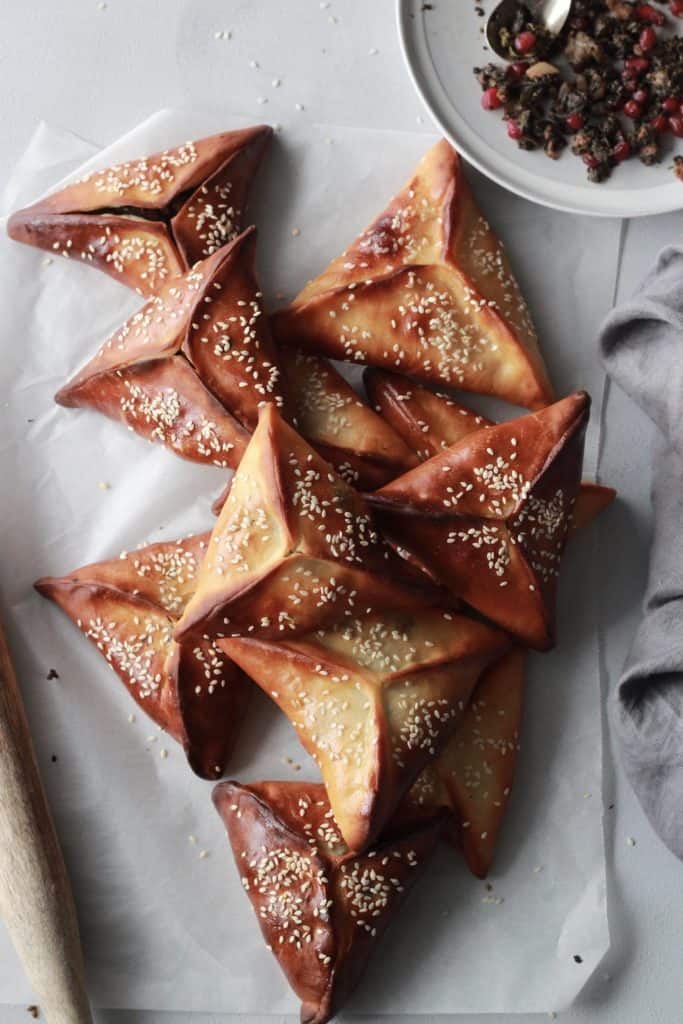
I’m sharing my recipe for spinach triangles (fatayer) in time for you to make it during #AprilIsForArabFood. As a child, whenever we would visit my home country, I would de.mol.ish. any plate of cheese or meat fatayer put in front of me. Spinach ones? Nah, not so much. I admit I was never a fan of spinach and it wasn’t until my adulthood that I grew to love the flavour of spinach and its immaculate paring with sumac – the tangy, pucker-inducing spice made from the berries of the sumac flower.
In Syria, if you walked past a bakery in the morning, the scent of croissants, ka’ak, and fatayer would hover by, teasing you until your knees buckled and you helplessly found yourself stumbling in, drooling at the selection of pastries, and then ordering way more than you can eat. It happened to me one morning. I got home with eleventy million pies and gosh mum was mad about it for as long as I can remember. I learnt my lesson and never walked down that route again.
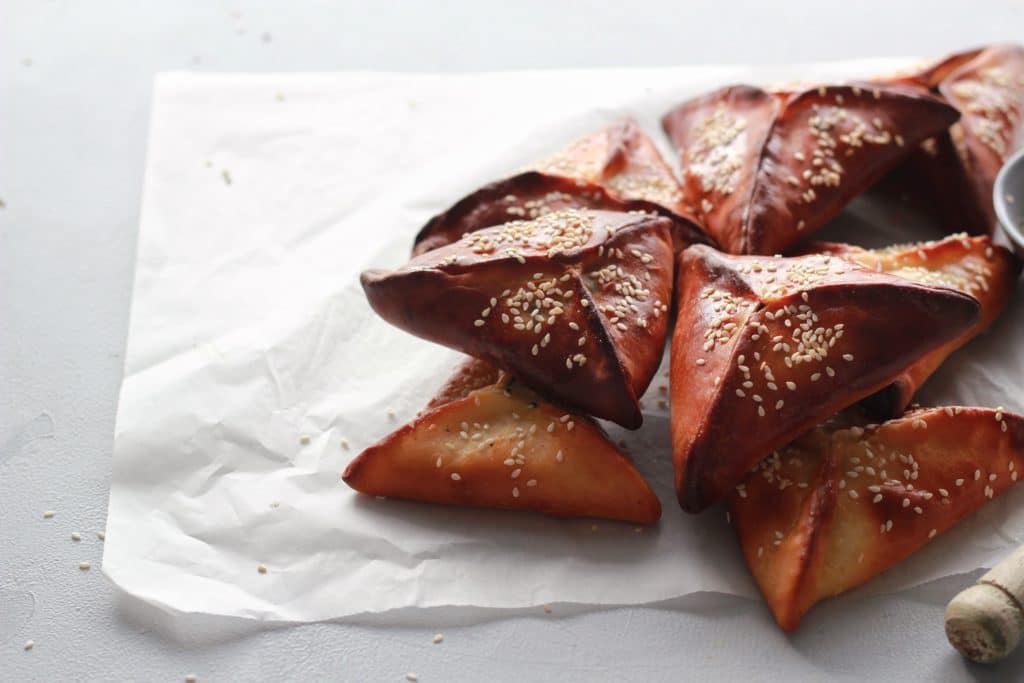
What are fatayer?
Fatayer are hand pies originating from the Middle East, specifically Levantine countries.
The pies are made with a yeast-based dough and are usually stuffed with meat, spinach, cheese, or a tangy thyme filling called za’tar. The pies are then baked to golden perfection and often served with tea, or more recently on trend, with soda. Smaller versions of these pies are served as mezze. If you’ve never heard of that before, think of it as a big grazing board. Mezze is a big tray full of a selection of dishes, served in small amounts as appetisers.
Another popular hand pie is called manoush. There are variations of how it’s spelt – you might come across it as mankoush, or its plural manakish, but they all refer to the same thing. Manoush and fatayer are essentially the same thing, the two words are used interchangeably to refer to the same hand pie. This mishmash of words is a result of geographic and dialect differences, as well as migration and its introduction into the western world.
Perhaps an untold rule of fatayer/manoush is the shape you’re supposed to make with each filling. Here’s a rundown of the shapes we use with each stuffing:
- Oval/round: used for a minced meat stuffing. This is an open pie (like a pizza) and is usually served with a dollop of natural yoghurt. Think of the Turkish Lahmacun, that’s what it looks like.
- Eye/boat shape: for a cheese stuffing. This is also an open shape, with the edges slightly folded over the filling to contain it.
- Triangle: for a spinach and sumac stuffing. This is a closed pie, and the triangle shape is achieved by folding a circle over itself in thirds (see below).
And while the traditional ways of shaping fatayer are still done, new trends in shaping and stuffing fatayer include:
- The semi-circle: much like an empanada. This shape is now often used at bakeries selling pies with cheese or chicken fillings.
- The crescent roll: this shape looks like a croissant. The filling is usually a cream cheese like Philly, or dark chocolate!
Ok, enough about fatayer. Let’s see how they’re made!
How do you make fatayer?
You start off by making a silky dough. The dough should feel hydrated, but it should also not stick to your finger if you softly touch it. In fact, you should be able to roll it on parchment paper without needing to flour your pin. If it’s stickier than this, instead of adding extra flour, try roll it out using oil. The oil adds a lovely golden colour to the dough when baked, and your fatayers won’t come out dry and brittle from the extra flour. Of course, common sense is essential here. If the dough is too sticky for whatever reason, then a light sprinkling of flour would be ideal.
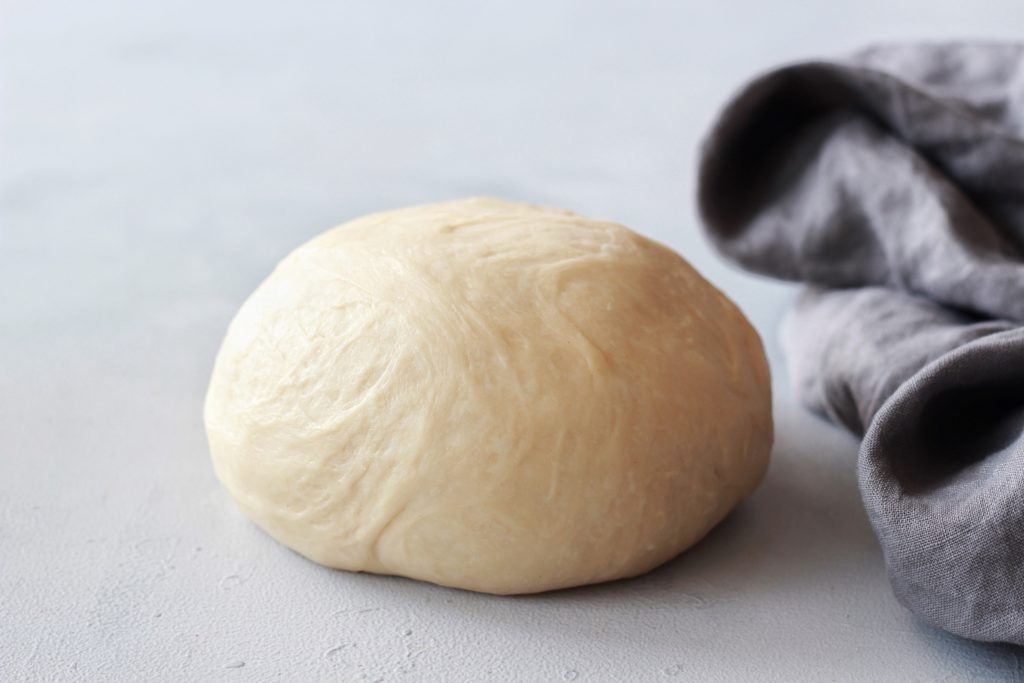
The dough is made with flour, sugar, dairy for richness, oil and yeast. If you haven’t worked with yeast before there’s nothing to fret. And if you’re asking the all-important question:
How do you bake with yeast?
I give you a great rundown on all you need to know about baking with yeast right here. This recipe uses instant yeast which is a breeze to work with and great for beginners.
While your dough is rising, make the filling by sautéing spinach, and onion in a saucepan with a pinch of salt, baharat and sumac. Add a tablespoon of pomegranate molasses, remove from the heat and add pomegranate arils. The arils are optional but they add such a delicious flavour to the filling. You can combine silverbeet and spinach for something different. I also like to add a bit of ground beef to the filling to aid iron absorption, but the meat is non-traditional, and completely optional.
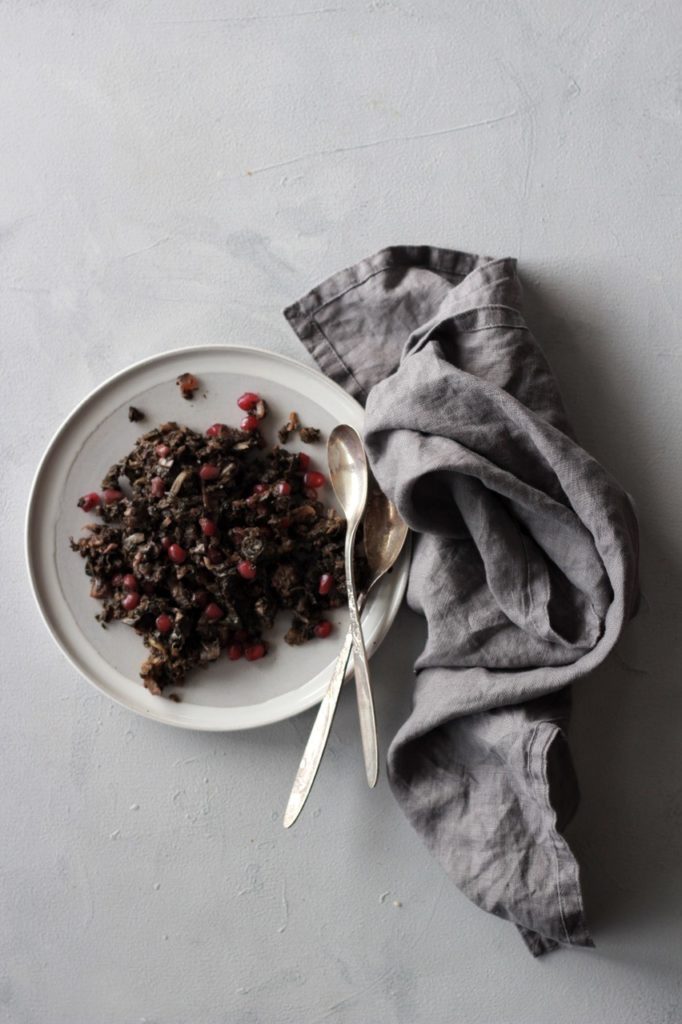
Once you’ve combined and proofed your dough, divide it into 12 equal pieces. I like to divide and roll out each individual fatayer so the dough doesn’t get overworked or wasted by rolling, cutting and re-rolling.
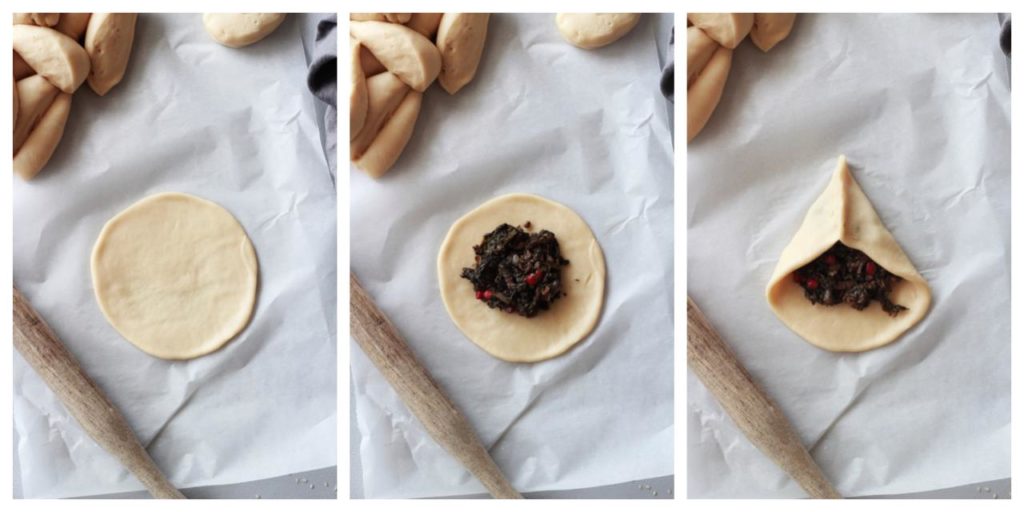
Next place about a tablespoon of the spinach filling in the centre, flatten it, then fold over the dough into thirds, forming a Y shape. Pinch to seal and repeat for the remaining dough.

Set the fatayer aside for a second rise for about 20 minutes. Reshape as necessary, brush with an egg wash and sprinkle on sesame seeds if desired. Bake them until a deep golden brown and serve as fresh as possible.
How to freeze and reheat fatayer.
Whilst fresh is always best, these are totally freezable for later. To freeze fatayer, wait until they are room temperature after baking. Consider baking them under by 2 minutes so you have some wiggle space to reheat them without burning them.
To freeze, wrap in cling wrap and place in a freezer safe bag. I usually recommend doing this to prevent freezer burn. When you’re ready to eat, thaw for several minutes while your oven preheats. Remove from plastic and place on a baking sheet, heating at 400°F/200°C/180°C fan forced until filling is hot. If you’re certain you will be baking these to freeze, do not brush on the egg wash when baking the first time. Instead brush it on when reheating, if desired.
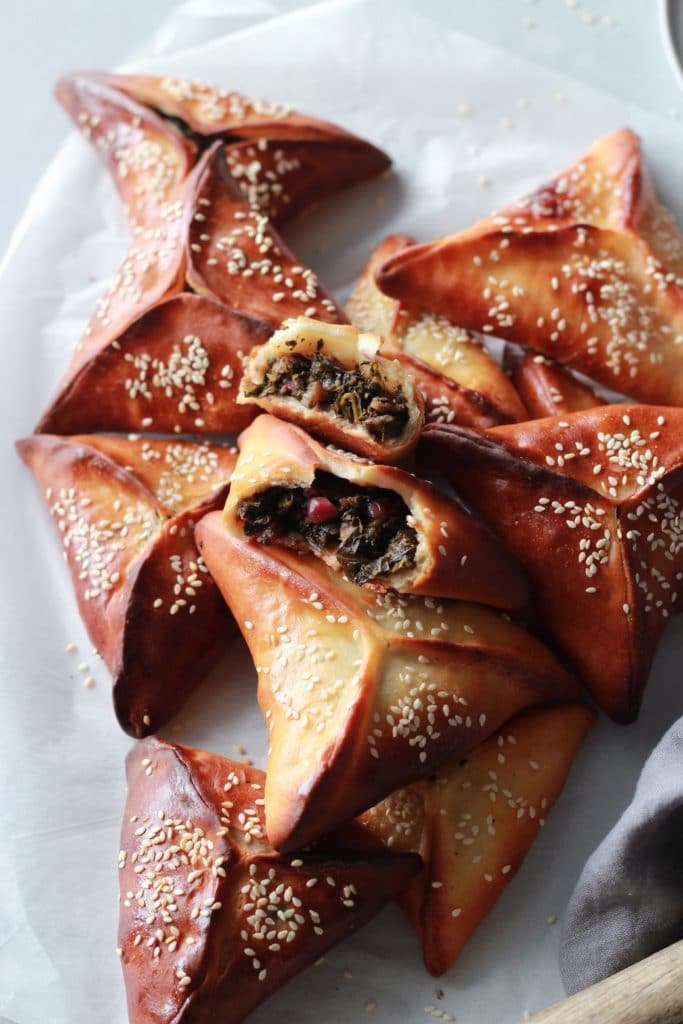
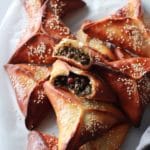
Spinach Triangles - Fatayer bi Sabanekh
Ingredients
Fatayer Dough
- 315 grams (2 cups) plain flour, plus extra for dusting
- 110 grams (6 tbsp) plain yoghurt, at room temperature
- ¼ cup flavourless oil, sunflower or similar
- ⅓ cup dairy milk of choice
- 3 tbsp granulated sugar
- 1 tbsp instant yeast
- ½ tsp salt
- eggwash and sesame seeds, if desired
Spinach Filling
- 350 grams roughly chopped spinach, see notes below
- 120 grams diet minced beef, non-traditional and completely optional
- 1 small brown onion, finely diced
- 1 tbsp pomegranate molasses
- ⅛ cup roughly chopped walnuts, optional
- ½ tsp salt,, to taste
- ½ tsp baharat, to taste
- ¼ tsp sumac, to taste
- ¼ tsp black pepper, to taste
- 2 tbsp oil for sautéing
Instructions
To make the dough
- Sift the flour, instant yeast, sugar and salt into a large bowl. Whisk to combine.
- Mix milk and oil in a measuring jug and heat in the microwave in 20 second intervals until lukewarm, but not hot.
- Make a well in the centre of the dry ingredients, add yoghurt and milk mixture. Combine with your hand until a dough forms. If using a stand mixer with the dough hook attachment, be sure to stop and scrape down the bowl.
- Cover and let rise in a warm spot for an hour, or until doubled in size (usually no more than 90 minutes should do it).
- Meanwhile, prepare the filling by sautéing onions, meat if using, and spinach in a pan with 2 tbsp oil. Drain some of the excess fluid from pan about half way through cooking, before seasoning.
- Add the pomegranate molasses and season spinach mixture. Add walnuts if using. Continue simmering on medium low heat until most of the fluid has evaporated and spinach is soft, about 10-15 mintues in total.
- Remove from heat and add pomegranate arils, if using. Stir through and set aside to cool completely.
- When dough has doubled in size, divide into 12 equal pieces. Roll each ball of dough into a ¼ inch thick (about ½ centimetre) disc. Add a heaped teaspoon of the filling into the centre of the cirlce and fold dough over filling in three segments, forming a Y shape. Pinch the edges well to seal and repeat for reamaining dough and mixture.
- Let the pies rest on a lined baking sheet for 20 minutes for a second rise. Reshape and pinch as necessary. Brush with an eggwash and sprinkle on sesame seeds.
- Bake in a preheated oven at 400°F/200°C or 180°C fan forced for 15-20 minutes, until golden brown.Serve with hot tea or a mediterranean salad for a more wholesome meal.
Notes
Tried it? Let me know if you liked it!
Go on and rate the recipe in the comments below. And don’t forget to tag your creations on Instagram with @tilgoldenbrown #tilgoldenbrown so I can feature them! 
It says add walnuts in the instructions but it’s not listed in the ingredients?? Not sure how many chopped walnuts to put
Thank you for pointing that out, Ayesha. I’ve fixed the recipe to include the walnuts as an ingredient.
For this specific amount I personally would use a small handful, approximately 1/8 cup of roughly chopped walnuts, or 1/4 cup of whole walnuts.